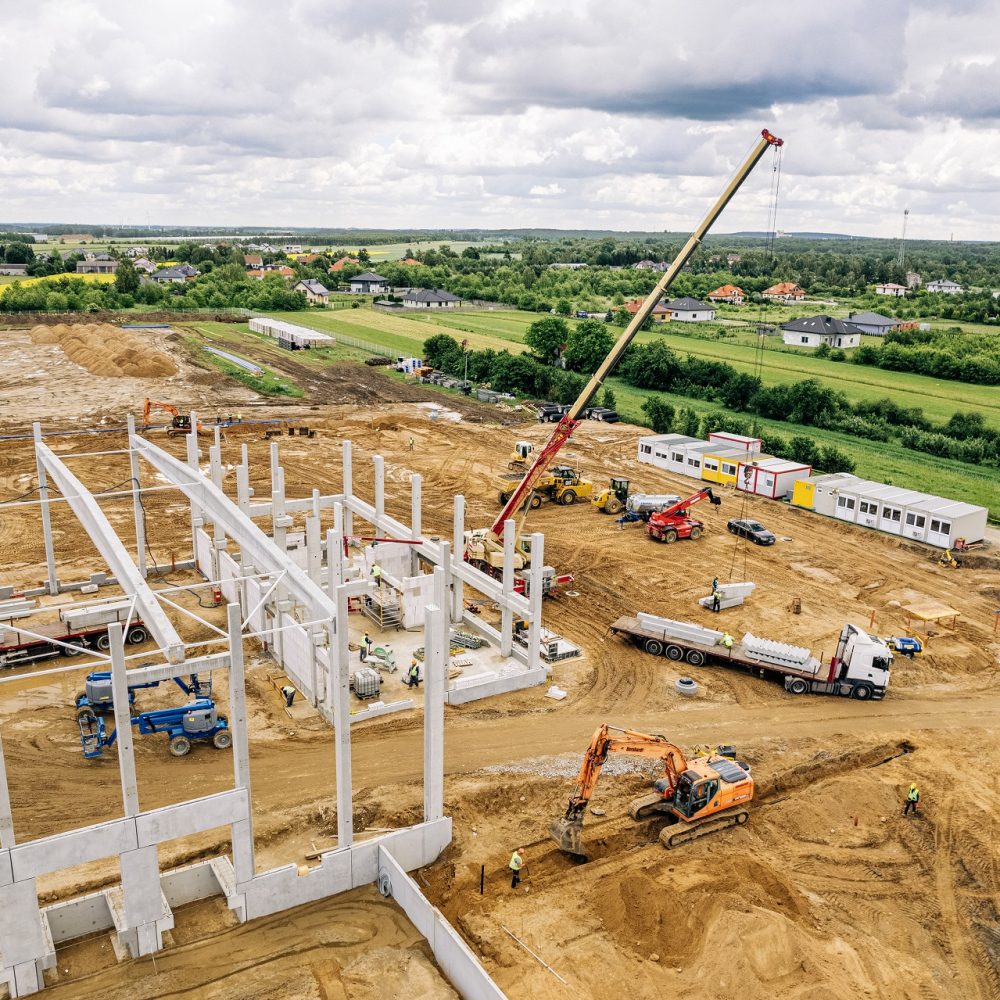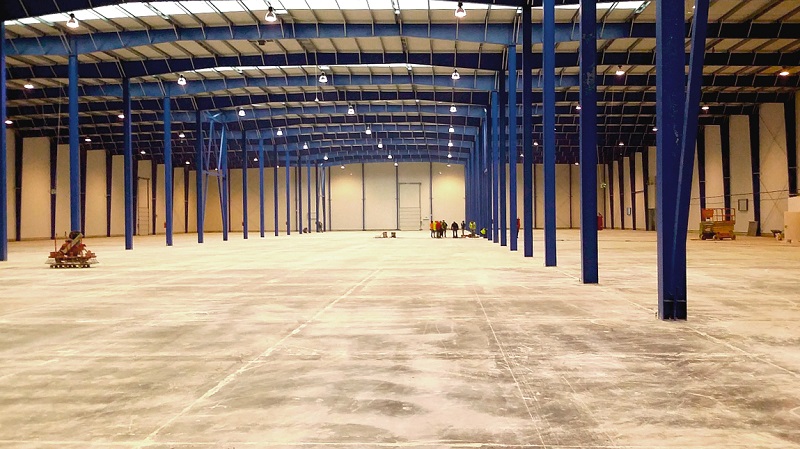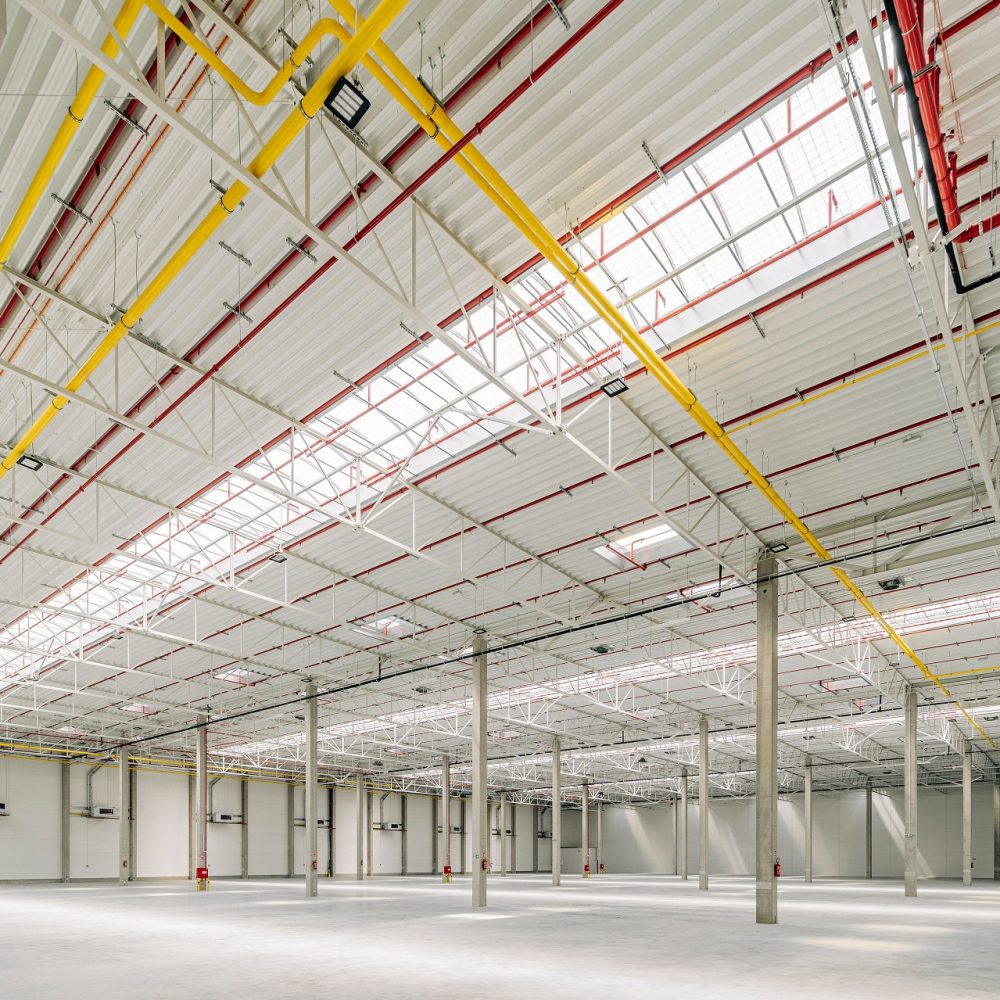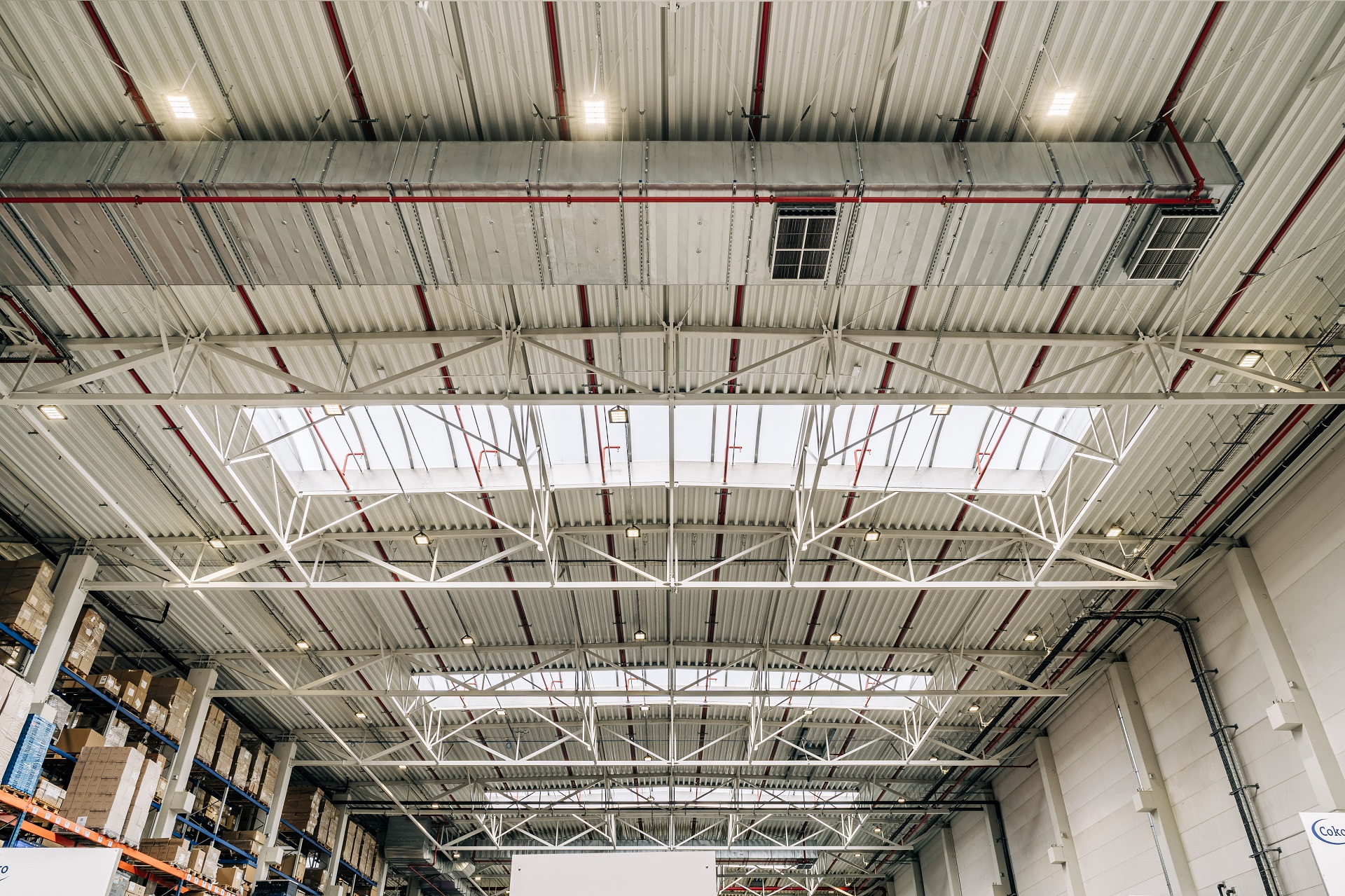
Heating the hall is a very important issue from an economic point of view as well as in terms of comfort. Cost-effective heating halls is undoubtedly a challenge due to considerable surface area and it is not made any easier by current trends in electricity and fuel price increases. Heating a warehouse, sports halls or production premises also requires consideration of the heating utilities and associated infrastructure available at the location. In each case, the heating system must also be adapted to the geometry and layout of the building and the way it is used – for example, in the case of heating a production hall, it is necessary to consider the thermal gains from the production process that interact with the heating system, which ultimately results in a reduction of the power/quantity of heating equipment and, in extreme cases, makes the heating system redundant (the thermal gains from the production process cover the entire amount of heat required during the heating period). Below, you will find out more on how to provide heating in a hall.
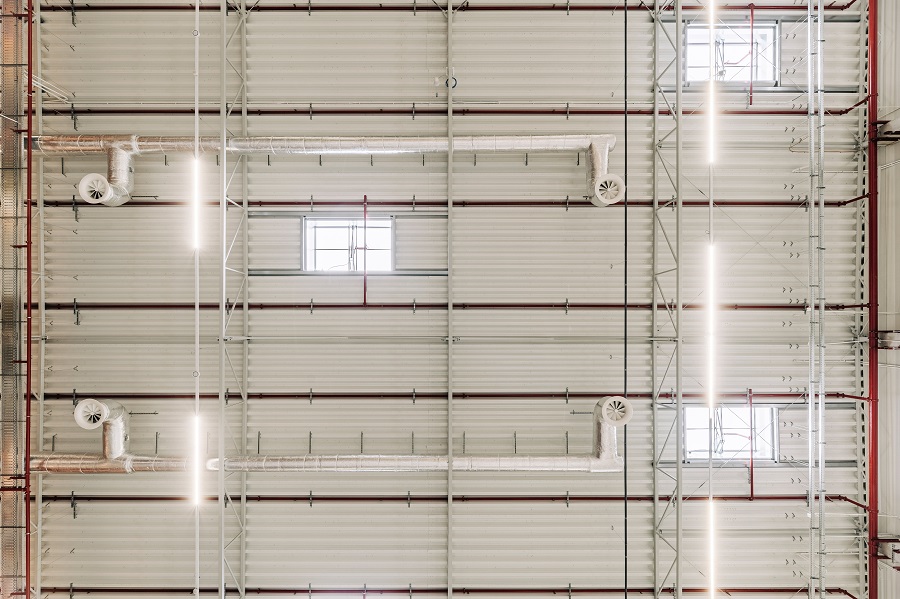
How to heat a production hall?
There are many ways to heat halls and they can be divided into stand-alone systems and those integrated into the hall ventilation system. There are many solutions available, so the question is how do you heat a hall? Nowadays, there are many solutions to distribute heat effectively in a hall and these include electric, gas or water heaters, air, oil or gas fired water heaters, hot air generators, air curtains or even the more traditional water heaters. The following sections briefly describe further solutions to maintain the correct hall temperature during the heating period.
Forced air heating
Hot-air hall heating is the solution of heating the air in a heated exchanger and directing it to an outlet from which it is distributed throughout the building. This solution is extremely efficient for large halls due to the huge volume of cubic metres of air inside the building, and the technology allows for easier (forced) mixing of the supplied warm air with the colder air in the hall, but also allows the warm air flow to be directed to the right places, ensuring proper distribution. Forced air heating for halls can be combined with a ventilation system so that it uses partly the air taken in from inside the building (correspondingly warmer) and partly the outside air to ensure the right amount of fresh air remains in circulation. Drawing air partly from the hall (warmer air) increases the energy efficiency of the system. The exchanger unit typically uses electricity or gas to heat the air in the system.
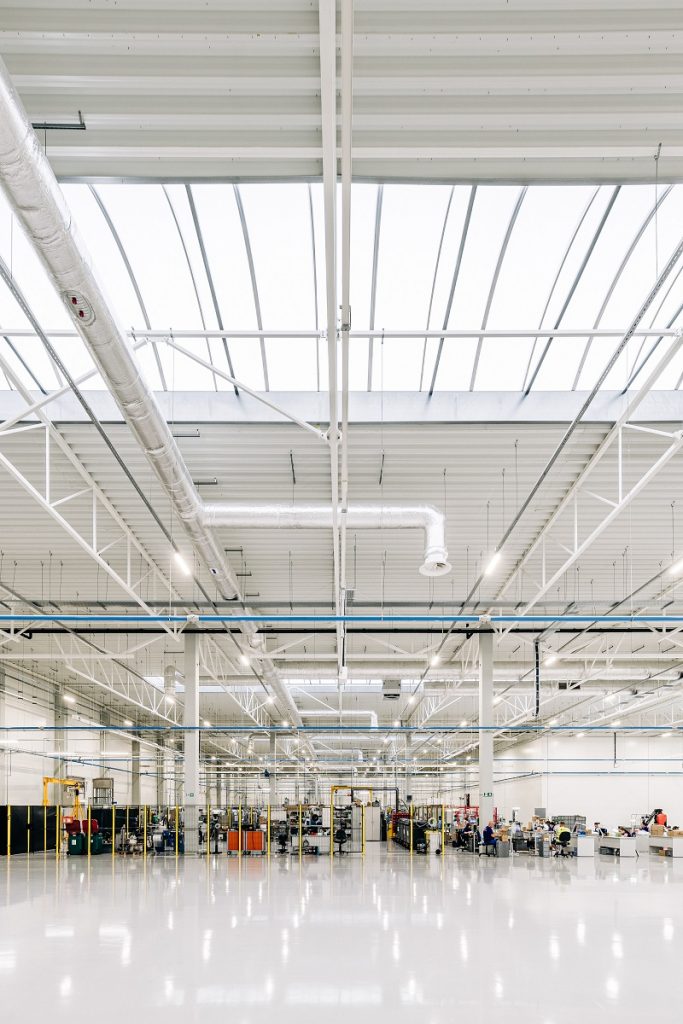
Forced air heating equipment can be located at various parts of the building, such as structural columns, wall cladding elements (if appropriate reinforcements are used) or suspended from the ceiling or roof structure.
Forced air heating can also be combined with a ventilation system, resulting in an additional exchange of heat between the cold air drawn in from outside and the used air blown out. The recuperator exchanges heat between the two air streams without mixing them.
Radiant heating
Radiant hall heating uses another method of heat energy transfer – radiation. Infrared emitting devices do not directly heat the building indoor air. Infrared radiation reaches the physical obstacles/objects inside the hall – it is only the obstacles encountered, such as pillars/registers/workbenches or even people subjected to infrared radiation, that are heated by it and further emit heat into the surrounding air. With this solution, the ability to precisely target the radiant heaters to strategic locations, ensuring the desired heat distribution, can also be cited as an advantage. Like the previously described solution, radiant heaters usually use electricity or gas to generate heat.
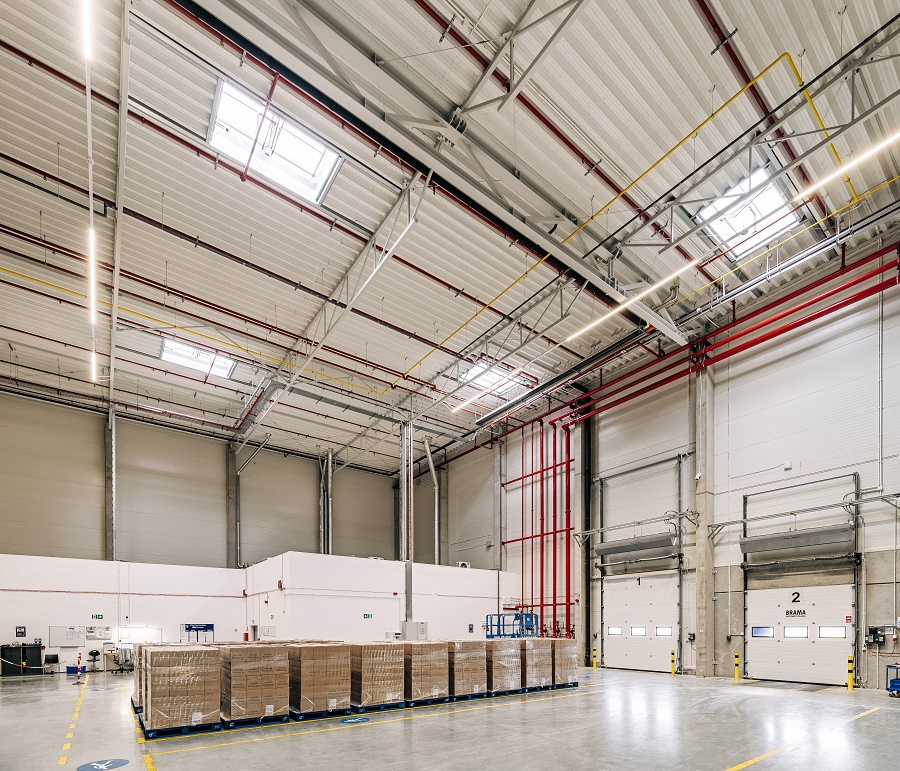
Air curtains
Air curtains are often used for heating logistics centres. In logistics centres, an unusually large component of heat loss from the building is the loss through random air exchange in the form of repeated opening and closing of doors at ramps or handling docks. The air curtain directs a strong stream of air vertically downwards during activation (door opening), preventing cold air from entering the building. This solution works well for areas that open frequently, such as main traffic routes and precisely the gates at loading areas. Air curtains are often used as an auxiliary heating source to protect the building from overcooling – less often as the sole source of heating, which in continuous operation compromises comfort due to the intensive airflow. What, on the one hand, can be a disadvantage with air curtains and therefore a strong jet of blown air, can also be an advantage. This is because these units can be used to heat up a room very quickly after an emergency cooling down.
Convection heating
Technologies more typical of housing construction can also be used for heating in halls. One such solution includes radiator (water) heating. The principle is quite common known – liquid-supplied radiators are customarily positioned under windows and along walls. By emitting heat, radiators introduce air in a convective motion. Convective heat dissipation in the case of buildings of considerable size (and volume) such as an industrial hall is generally of little use due to the limited range of air mass movement.
Similarly, there are limitations as to the use of other types of stationary heaters such as oil-fired heaters, which, like water-fired heaters, heat the area by inducing the movement of air masses through convection.
How to heat a hall at low cost?
The most important thing is to adapt the heating technology to the way the building is used. When it is necessary to ensure even temperature distribution throughout the building, it is advisable to rely on methods providing forced movement of air masses which, through intense mixing, equalises the temperature throughout the building. If a higher temperature needs to be provided locally throughout the facility, for example at workstations, then the use of solutions that provide local heating, such as radiant heaters, is advisable.
The first step towards low-cost hall heating is undoubtedly to turn to a contractor with long years of experience in the industrial building market, for a consultation based on both, the knowledge and experience of its previous (and often returning) customers.

